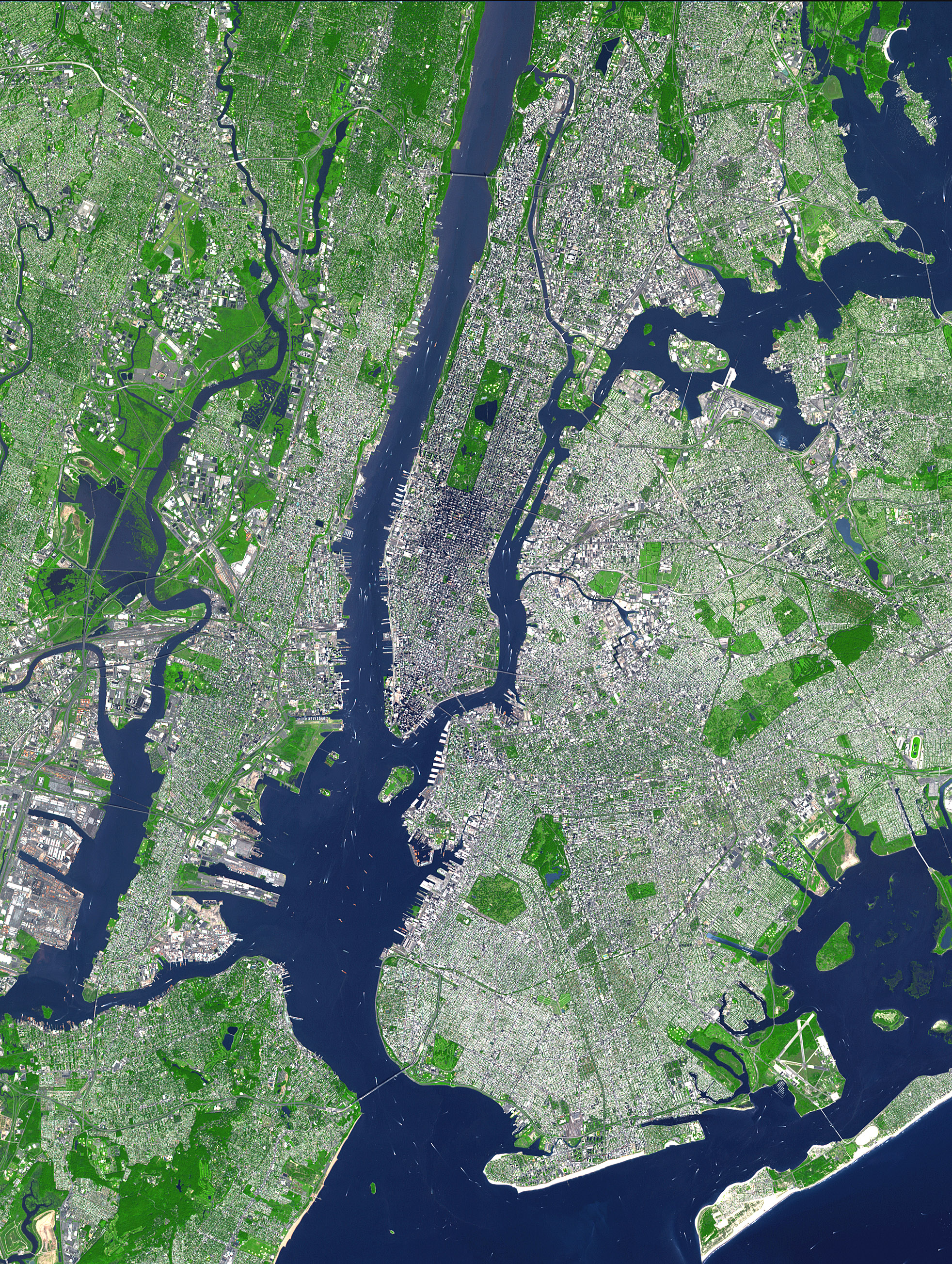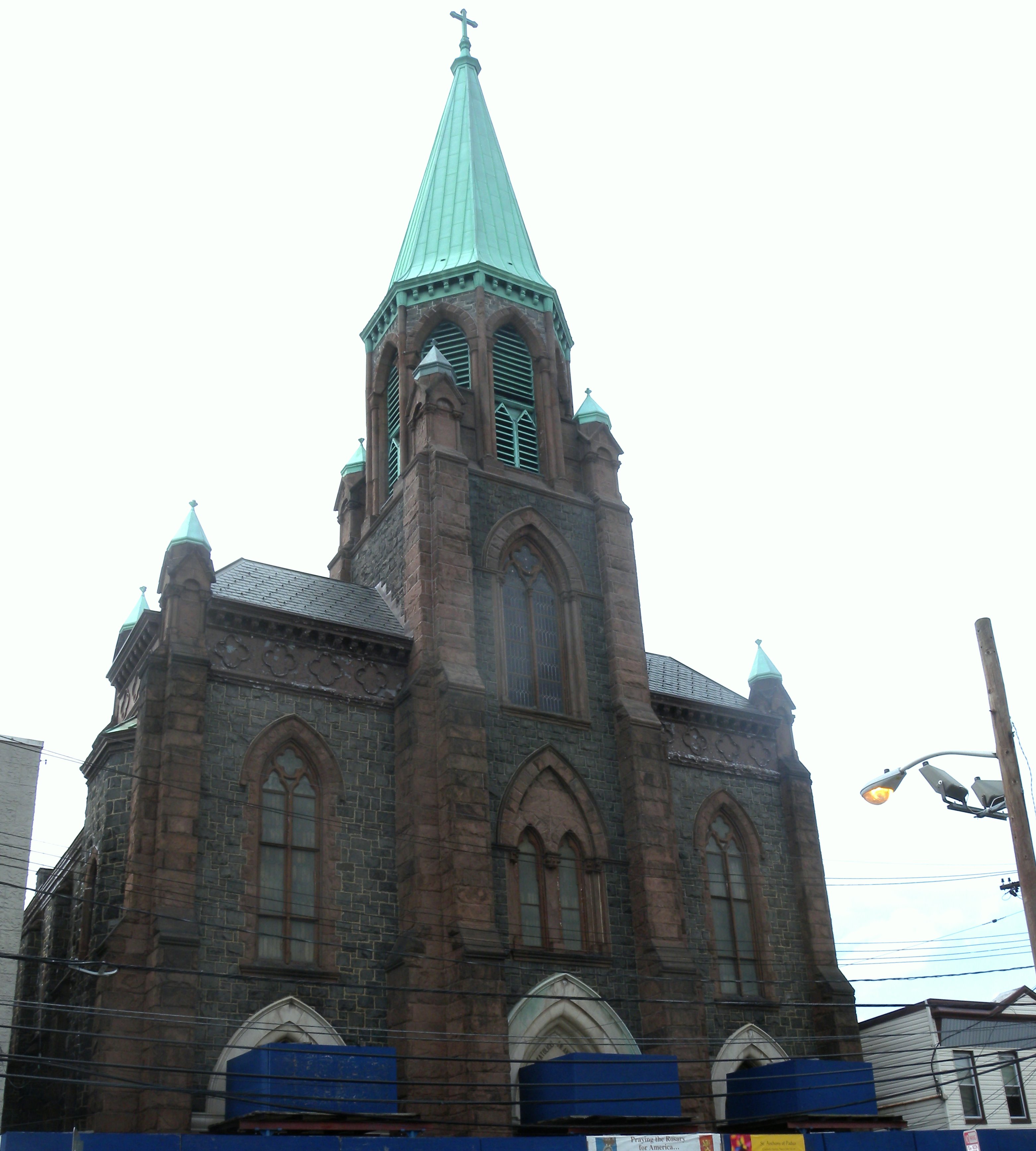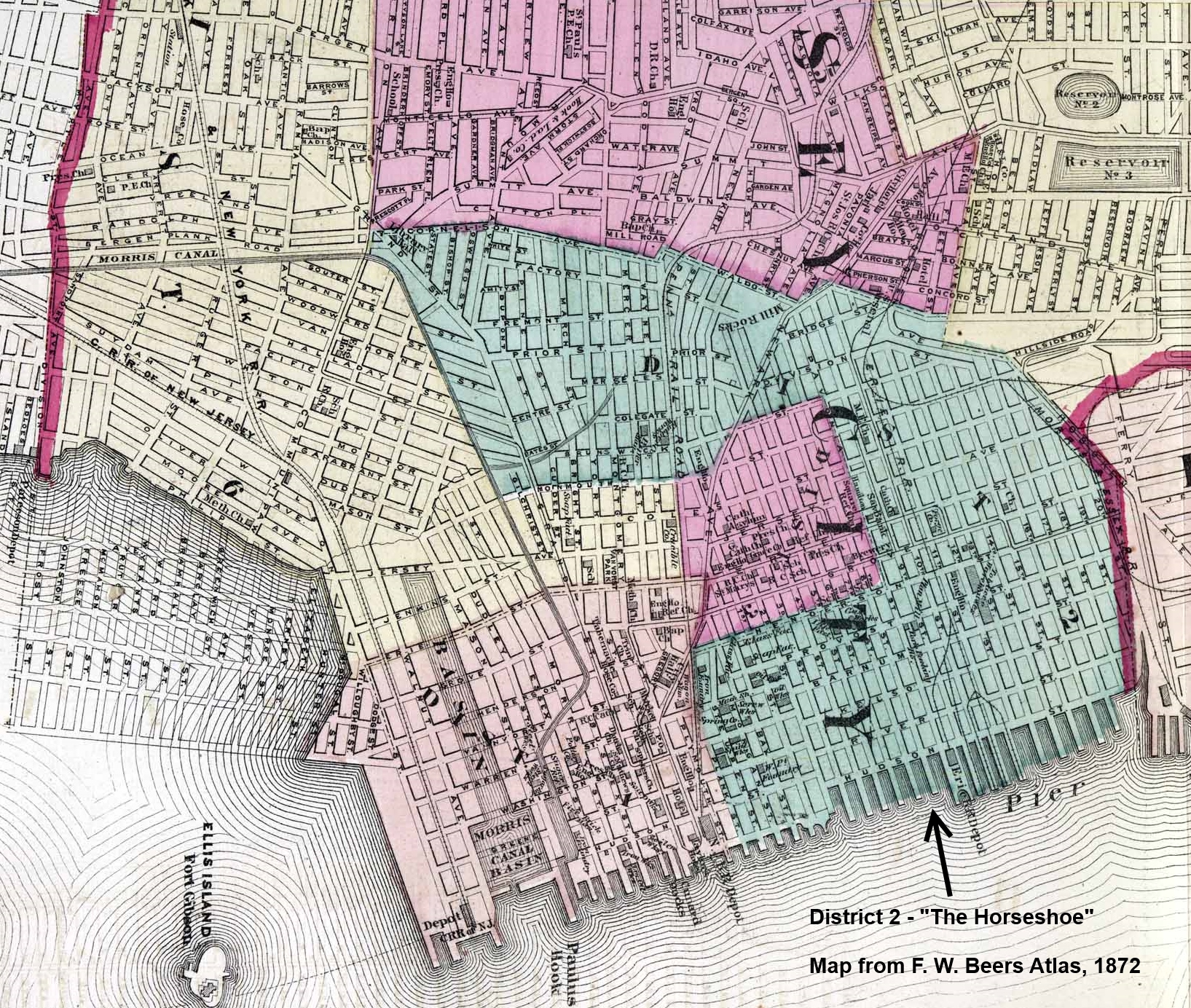|
Harsimus
Harsimus (also known as Harsimus Cove) is a neighborhood within Downtown Jersey City, Hudson County, New Jersey, United States. The neighborhood stretches from the Harsimus Stem Embankment (the Sixth Street Embankment) on the north to Christopher Columbus Drive on the south between Coles Street and Grove Street or more broadly, to Marin Boulevard. It borders the neighborhoods of Hamilton Park to the north, Van Vorst Park to the south, the Village to the west, and the Powerhouse Arts District to the east. Newark Avenue has traditionally been its ''main street''. The name is from the Lenape, used by the Hackensack Indians who inhabited the region and could be translated as ''Crow’s Marsh''. From many years, the neighborhood was part of the " Horseshoe", a political delineation created by its position between the converging rail lines and political gerrymandering. Early settlement Harsimus is a derivative of a Lenape phrase, possibly meaning ''Crow's Marsh''. Spellings i ... [...More Info...] [...Related Items...] OR: [Wikipedia] [Google] [Baidu] |
Harsimus Stem Embankment
The Harsimus Stem Embankment, also called Sixth Street Embankment, is a half-mile-long historic railroad embankment, now abandoned and largely overgrown with foliage, in the heart of the historic downtown of Jersey City, New Jersey in the United States. The embankment runs along the south side of Sixth Street west from Marin Boulevard to Brunswick Street. It is the border between the Harsimus and Hamilton Park neighborhoods. The overhead tracks of the beam bridge west of Brunswick Street were dismantled but the stone abutments remain. This elevated stone structure once carried seven tracks of the Pennsylvania Railroad's Passaic and Harsimus Line to its freight yards and carfloat operations on the Hudson River at Harsimus Cove, and to its warehouse and distribution facility (now Harborside Financial Center). The line was part of the railroad's holdings on the waterfront, which included the Exchange Place passenger terminal and the Greenville Yard. The Embankment is li ... [...More Info...] [...Related Items...] OR: [Wikipedia] [Google] [Baidu] |
Jersey City, New Jersey
Jersey City is the second-most populous city in the U.S. state of New Jersey, after Newark.The Counties and Most Populous Cities and Townships in 2010 in New Jersey: 2000 and 2010 , . Accessed November 7, 2011. It is the of and the county's largest city. [...More Info...] [...Related Items...] OR: [Wikipedia] [Google] [Baidu] |
Pavonia, New Netherland
Pavonia was the first European settlement on the west bank of the North River (Hudson River) that was part of the seventeenth-century province of New Netherland in what would become the present Hudson County, New Jersey. Hudson and the Hackensack The first European to record exploration of the area was Robert Juet, first mate of Henry Hudson, an English sea captain commissioned by the Dutch East India Company. Their ship, the ''Halve Maen'' (''Half Moon''), ventured in the Kill van Kull and Newark Bay and anchored at Weehawken Cove during 1609, while exploring the Upper New York Bay and the Hudson Valley. By 1617 a ''factorij'', or trading post, was established at Communipaw. Others may have been established at Arresick or Hobokan Hackingh. Initially, these posts were set up for fur trade with the indigenous population. At that time the area was inhabited by bands of Algonquian language speaking peoples, known collectively as Lenni Lenape and later called the Delawares. Ea ... [...More Info...] [...Related Items...] OR: [Wikipedia] [Google] [Baidu] |
Hudson County, New Jersey
Hudson County is the most densely populated county in the U.S. state of New Jersey. It lies west of the lower Hudson River, which was named for Henry Hudson, the sea captain who explored the area in 1609. Part of New Jersey's Gateway Region in the New York metropolitan area, the county's county seat and largest city is Jersey City,New Jersey County Map New Jersey Department of State. Accessed July 10, 2017. whose population as of the was 292,449. As of the |
Hudson County
Hudson County is the most densely populated county in the U.S. state of New Jersey. It lies west of the lower Hudson River, which was named for Henry Hudson, the sea captain who explored the area in 1609. Part of New Jersey's Gateway Region in the New York metropolitan area, the county's county seat and largest city is Jersey City,New Jersey County Map . Accessed July 10, 2017. whose population as of the was 292,449. As of the |
Bergen, New Netherland
Bergen was a part of the 17th century province of New Netherland, in the area in northeastern New Jersey along the Hudson and Hackensack Rivers that would become contemporary Hudson and Bergen Counties. Though it only officially existed as an independent municipality from 1661, with the founding of a village at Bergen Square, Bergen began as a factory at Communipaw circa 1615 and was first settled in 1630 as Pavonia. These early settlements were along the banks of the North River (Hudson River) across from New Amsterdam, under whose jurisdiction they fell. ''Halve Maen'' Explored to The Narrows by Giovanni da Verrazzano, sailing on a French expedition in 1524, the area was visited by Spanish and English seafarers during the next century. It was again visited in 1609 by the Englishman Henry Hudson, who had been commissioned by the Dutch East India Company to find a navigable passage to Asia. During this journey his ship, the ''Halve Maen'' (Half Moon), laid anchor at Sandy H ... [...More Info...] [...Related Items...] OR: [Wikipedia] [Google] [Baidu] |
Van Vorst Park
Van Vorst Park is a neighborhood in the Historic Downtown of Jersey City, Hudson County, New Jersey, centered on a park sharing the same name. The neighborhood is located west of Paulus Hook and Marin Boulevard, north of Grand Street, east of the Turnpike Extension, and south of The Village and Christopher Columbus Drive. Much of it is included in the Van Vorst Park Historical District. The park was a centerpiece of Van Vorst Township, a township that existed in Hudson County from 1841 to 1851. Van Vorst was incorporated as a township by an Act of the New Jersey Legislature on April 12, 1841, from portions of Bergen Township. On March 18, 1851, Van Vorst Township was annexed by Jersey City.Snyder, John P''The Story of New Jersey's Civil Boundaries: 1606-1968'' Bureau of Geology and Topography; Trenton, New Jersey; 1969. p. 148. Accessed June 26, 2013. The name Van Vorst comes from a prominent family in the area, the first of which arrived in the 1630s as superintendent of t ... [...More Info...] [...Related Items...] OR: [Wikipedia] [Google] [Baidu] |
The Village, Jersey City
The Village is a neighborhood in the western section of Historic Downtown in Jersey City. It is bordered by Hamilton Park and Harsimus Cove to the east and the Turnpike Extension to the west, on the other side of which Jones Park and Mary Benson Park are located. Newark Avenue is the major street across the Village from Grove Street at the east to Bergen Hill at the west. The neighborhood for many years was considered the city's "Little Italy" neighborhood. Brunswick Street, between 1st and 10th Streets was once full of merchants and nicknamed "Bushel Avenue". ''New York News Magazine''. May 16, 1976. Archived at JC Village. Retrieved November 6, 2015. [...More Info...] [...Related Items...] OR: [Wikipedia] [Google] [Baidu] |
Hamilton Park, Jersey City
Hamilton Park is a neighborhood in Historic Downtown Jersey City, Hudson County, New Jersey, United States, centered on a park with the same name. Hamilton Park is located west of Newport, north of Harsimus Cove, north and east of The Village and south of Boyle Plaza. The Victorian age park is located between Eighth Street and Ninth Street and Hamilton Place on the west and McWilliams Place on the East. Like the Van Vorst Park neighborhood to the south, this quiet park is surrounded by nineteenth century brownstones. The park underwent renovations completed in 2010. Programs The park produces several events throughout the year, some of which include * A Shakespeare in the Park series by the Hudson Shakespeare Company. The professional company produces one Shakespeare or classical show for each summer month. This is paid for by the Hamilton Park Neighborhood Association and is free to watch * Movies in the Park, a series of outdoor screening of 4 to 5 movies in the months ... [...More Info...] [...Related Items...] OR: [Wikipedia] [Google] [Baidu] |
Hackensack Indians
Hackensack was the exonym given by the Dutch colonists to a band of the Lenape, or ''Lenni-Lenape'' ("original men"), a Native American tribe. The name is a Dutch derivation of the Lenape word for what is now the region of northeastern New Jersey along the Hudson and Hackensack rivers. While the Lenape people occupied much of the mid-Atlantic area, Europeans referred to small groups of native people by the names associated with the places where they lived. Territory and society The territory of the Hackensack was variously called Ack-kinkas-hacky, Achkinhenhcky, Achinigeu-hach, Ackingsah-sack, among other spellings (translated as "place of stony ground" or "mouth of a river") and included the areas around the Upper New York Bay, Newark Bay, Bergen Neck, the Meadowlands, and the Palisades. A phratry of the Lenape, the Hackensack spoke the Unami dialect, one of the two major dialects of the Lenape, or Delaware, languages, which were part of the Algonquian language family. ... [...More Info...] [...Related Items...] OR: [Wikipedia] [Google] [Baidu] |
Horseshoe, Jersey City
The Horseshoe section of Jersey City, New Jersey, was the second ward, and was the home of the immigrants, tenements, and taverns. The Republican-controlled Legislature gerrymandered the district in 1871 to concentrate and isolate Democratic, and mostly Catholic, votes, thus preserving Republican dominance in the rest of the state. The curved shape of the district was said to resemble a horseshoe. As competing railroads built cuts through Bergen Hill, they also built viaducts from the foot of the cliff which passed through residential districts to the waterfront. The district is often associated with the name Pavonia encompassing Harsimus Cove, Hamilton Park, Powerhouse and the former site of the Erie Railroad's Hudson waterfront Pavonia Terminal and the Pavonia Ferry, which since the 1980s has been redeveloped as Newport. Frank Hague Frank Hague (January 17, 1876 – January 1, 1956) was an American Democratic Party (United States), Democratic Party politician who serv ... [...More Info...] [...Related Items...] OR: [Wikipedia] [Google] [Baidu] |
Michael Reyniersz Pauw
Knight Michiel Reiniersz Pauw (born 29 March 1590 – died 20th, buried 24 March 1640 at Nieuwe Kerk, Amsterdam was a director of the Dutch West India Company (WIC) between 1621-1636. He grew up in Warmoesstraat in an influential Calvinist merchant family and studied law in Leiden. In 1615 Michael married Hillegonda Spiegel; in 1631 they lived at Singel 200. His brother Adriaan Pauw (1585 - February 21, 165 was Grand Pensionary of Holland from 1631 to 1636 and from 1651 to 1653, and signatory of the Peace of Münster (1648) for which he was instrumental as ambassador for Holland. They had four brothers: Cornelis, Reynier, Pieter and Jacob. Their father, Reynier Pauw (1564–1636) was a merchant in grain and timber, one of the founders of the Dutch East India Company and the Dutch West India Company, several times mayor of Amsterdam. West India Company The WIC was founded in 1621 to exploit trade in the Western Hemisphere, and by 1625 had established a colony at Fort Amst ... [...More Info...] [...Related Items...] OR: [Wikipedia] [Google] [Baidu] |


.jpg)


.png)





.jpg)